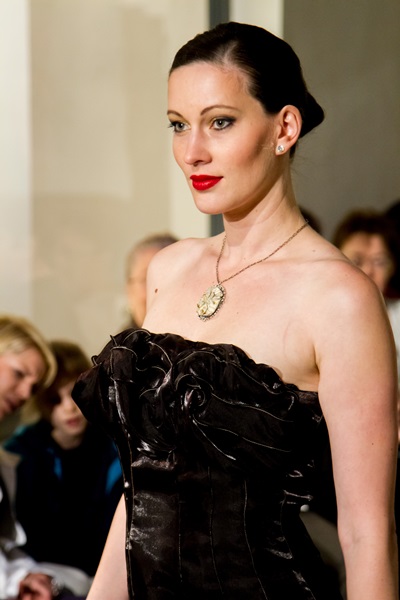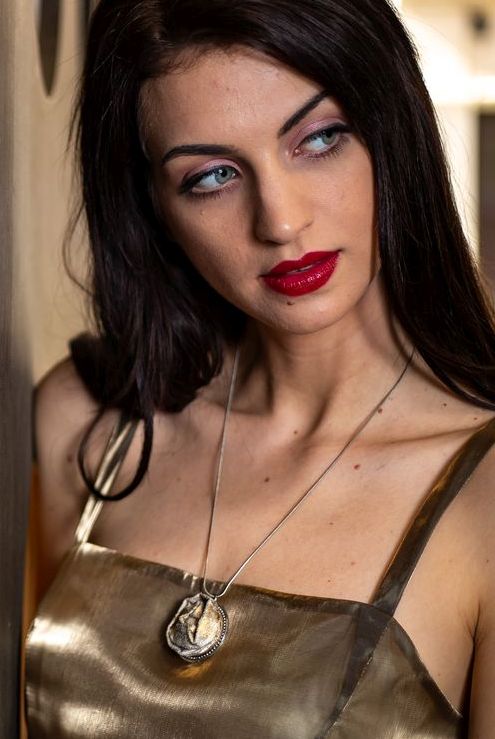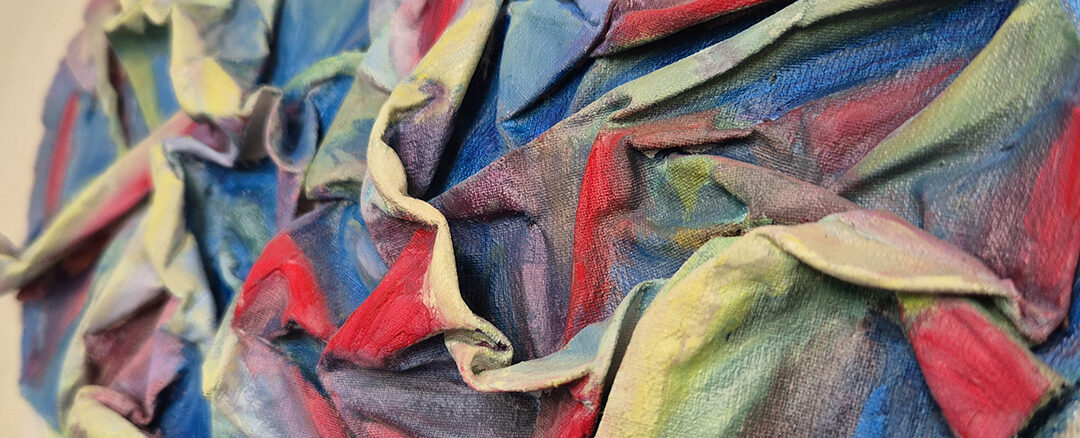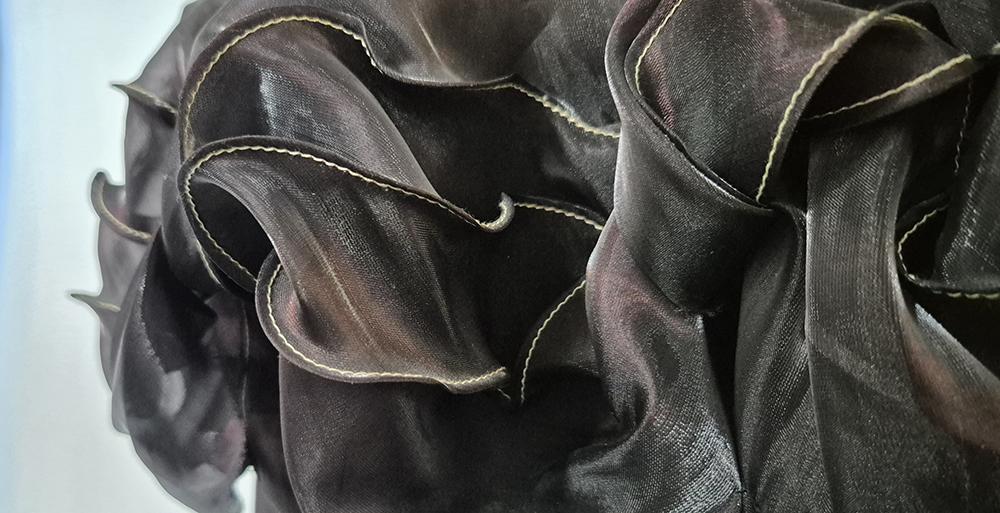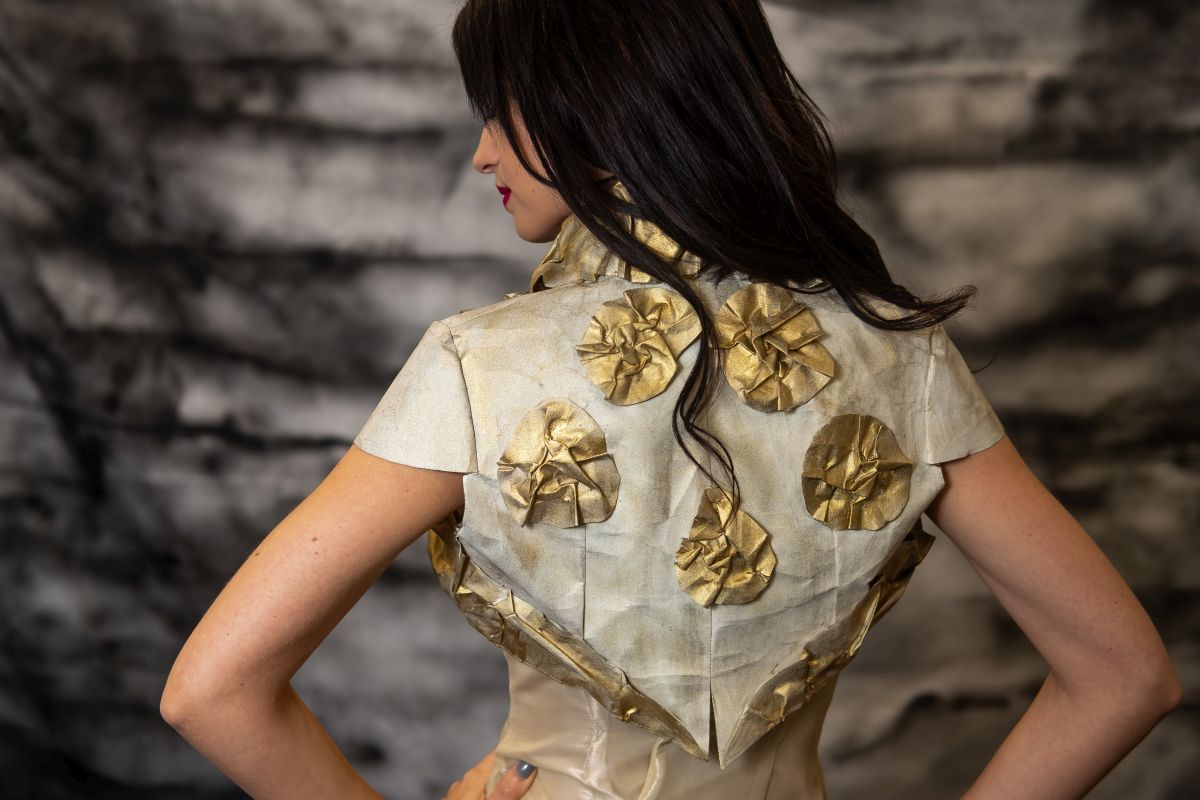The Art of Texture
For me, texture is not just a surface detail — it’s a form of expression. My crumpled application isn’t a technique in the conventional sense; it’s a philosophy rooted in the belief that the fold, the crease, the irregularity all hold their own quiet beauty. It’s a way of working that invites subtle complexity and an embrace of imperfection.
A Continuation of History
My fascination with folds began as I immersed myself in the visual world of historical garments. The sculptural grandeur of 19th-century fashion and the architectural silhouettes of bustle dresses still has special hold on me. These garments were architectural — they carried weight, form, volume. I began to see fabric not only as material but as structure. Just as painters use brushstrokes, I began using texture to shape meaning.
But this relationship with form stretches even further back. From the draped linen of ancient Greece to the rigid geometry of Renaissance silhouettes, history taught me that texture was never incidental. It signaled presence, care, human touch. My crumpled sewing application techniqu draws from that lineage — yet insists on contemporaneity on using texture not to signal perfection, but to reveal humanity.
A Living Surface
When I apply this technique to my garments, it’s not about embellishment — it’s about movement. I want the fabric to breathe, to shift with the body. Each fold changes as the wearer moves, catching light, casting shadows, becoming something new in every moment. There is no repetition. Each piece develops its own skin, its own temperament. That individuality — that refusal to be replicated — is where I locate the soul of luxury.
In Paintings: Texture as Presence
When applied to my paintings, the crumpled surface becomes a topography — a layer that disturbs the flatness of the canvas and demands a slower kind of looking. These are not paintings to be consumed in a glance. The texture asks for attention, for a tactile engagement that blurs the line between object and image. It becomes more than visual; it becomes physical.
Echoes of Canvas: The Pliora Jewellery Series
The crumpled application finds a new voice in the Pliora series — a collection of pendants where canvas, rather than fabric or metal, becomes the sculptural medium. Each piece begins as a hand-shaped, crumpled fragment of painted canvas, transformed into a miniature topography of texture and gesture. These fragments are then preserved and suspended from sterling silver necklaces, creating a delicate interplay between softness and strength, movement and stillness.
Rather than working the metal itself into folds, I allow the canvas element to carry the tactile narrative, turning each pendant into a wearable fragment of a larger visual story. The Pliora series continues my exploration of texture as meaning — elevating every crease and curve into something precious, intimate, and deeply personal. These are not simply accessories; they are poetic distillations of my wider practice, held close to the body.
Where Form Becomes Feeling
In a world so saturated with polish and sameness, I find comfort in texture. The crumple is a reminder that what is touched, worn, altered — lived in — holds more meaning than what is flawless. My work is not about control, but about dialogue: between body and garment, viewer and surface, wearer and artwork. Each fold is a gesture. A mark of presence. And that, to me, is the beginning of beauty.
